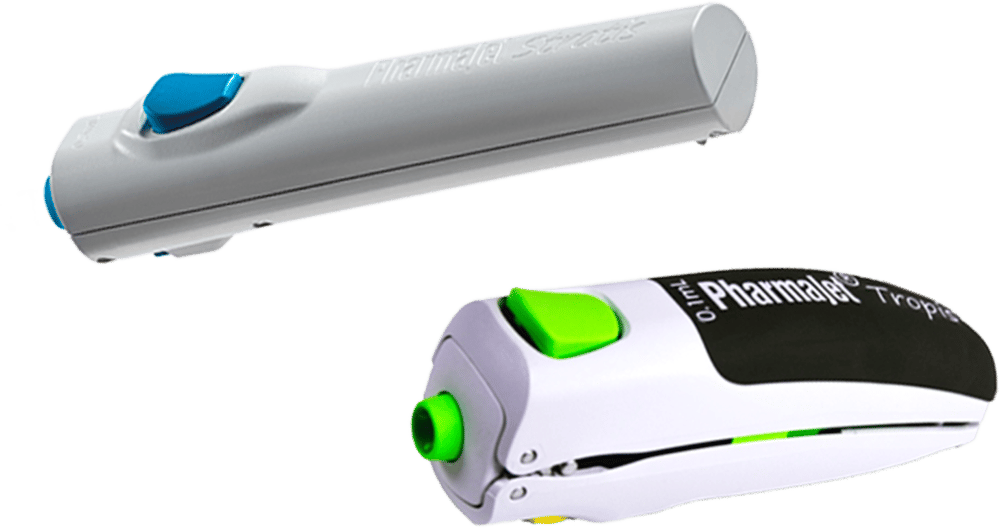Needle-free injections are revolutionizing medicine by delivering drugs without the pain of traditional needles. Using jet injectors and microneedle patches, these technologies offer a safer, cleaner, and more comfortable alternative for vaccines, insulin, and more.
Needle-Free Injections: The Painless Future of Drug Delivery
Written by Sumit Kaushik

If needles themselves send shivers down your spine, you're not the only one. Needle phobia or pathologic fear of needles is reaching out to millions of individuals worldwide and triggering avoidance or delay of important medical procedures like vaccination or insulin injection.
The phobia not only jeopardizes individual health. but also disease control programs in public health. But medical science is combating it with a game-changer: needle-free injections. This new technology will change medicine delivery with an easier, painless, safe, and effective method of delivery as opposed to the traditional needle.
What Are Needle-Free Injections?
Needles penetrate the skin and administer medicine to the bloodstream or muscle tissue in conventional injections. Needle-free injectors, on the other hand, administer medicine without the use of sharp needles. They employ high-pressure jets, microscopic needles, or lasers to administer medicine painlessly or with reduced pain to skin.
Two major categories are the strongest force here
- Jet Injectors: Jet injectors utilize a high-pressure liquid jet of medicine that penetrates the skin within seconds. Liquid is expelled out of an extremely tiny orifice, producing a very fine jet capable of accurately depositing an exact amount to the subcutaneous or dermal layer without a needle.
- Microneedle Patches: They use hundreds or thousands of very small needles made of dissolving material such as polymers or sugar. On application, microneedles pierce the skin surface by fractions to deliver drugs, then harmlessly dissolve.
These technologies all try to do away with pain, fear, and risk of traditional needle stings.
How Do They Work?
Jet Injectors
Jet injectors use a spring or gas-pressure force to propel medicine from an incredibly small nozzle at high speeds. The liquid jet penetrates the outer layer of skin on the other side and deposits medicine directly into the receiving tissue. It can be done quickly, within less than one second, and is well suited for vaccine, insulin, and hormone replacement therapy.
Microneedle Patches
Microneedle patches are made up of extremely fine needles, which are generally less than a millimeter, practically invisible to the patient. When placed on the skin, they create small pores through which medication can be absorbed. Since the needles are aimed to break down as they release the drug, no sharp object has to be disposed of. The patches are simple to apply and can in most cases be self-applied by the patient, and are thus highly appropriate to home care or where there is limited medical staff.
Advantages Over Pain Relief
Eradication of pain is the main advantage, but needle-free injections also have other advantages which simplify delivery and safety of medicine:
- Less Needle-Stick Injuries: Healthcare workers are exposed to injury by a needle accidentally, which can result in contracting blood-borne illnesses. Needle-free devices entirely eliminate such risk.
- Less Risk of Infection: Since needles are avoided, risk of infection resulting from reused or disposable needles is eliminated.
- Greater Patient Compliance: Needle phobia is one of the most frequent barriers to treatment and immunization adherence. Needle-free delivery systems result in greater acceptability, especially in needle-phobic adults and young children.
- Greater Logistics: Needle-free injectors have less rigorous storage and waste-disposal requirements, improving problematicss in low-resource or remote settings.
- Environmental Benefits: No longer is there any need for needle waste and thus no more specially disposed hazardous sharps to reduce medical waste.
Practical Applications and Impact
Needleless technology is now finally being explored in numerous applications:
- Diabetic Treatment: Jet injectors are a substitute for insulin injection, allowing pain-free injections and improving the lives of millions of diabetics who have to inject themselves every day.
- Vaccine Programs: Global health officials and the World Health Organization (WHO) are investigating microneedle patches for vaccines to prevent measles, influenza, and COVID-19. Microneedle patches would make mass immunization drives much easier, particularly in remote regions.
- Cosmetic Treatments: Needle-free injection is becoming increasingly popular in cosmetic dermatology, with injections of hyaluronic acid and Botox being given through the delivery of jet injectors or microneedles to reduce pain. Market leaders such as PharmaJet, Portal Instruments, and Micron Biomedical have also developed FDA-approved and CE-marked products, the seal that denotes maturity and acceptability of such technology.
The Future of Needle-Free Drug Delivery
Future advanced needle-free technologies will be witnessed with greater innovation:
- Smart Microneedle Patches: Patches capable of monitoring body temperature or hydration level to release medication dynamically depending on need.
- Wearable Injectors: Wearables synchronized with smartphones and wellness apps to monitor the dosing regimen and reminders.
- AI-Driven Jet Injectors: Smart devices that learn to respond to injection pressure based on individuals' own skin type or thickness for maximum comfort and efficacy.
These devices are designed to provide highly individualized, accurate, and easy-to-use drug delivery systems to enable people to control their own health.
Final Thoughts
The age of needle-free injections is finally no longer a distant dream—but one already available to us, revolutionizing the way we appear and are treated for medical issues. Not only do such machines render the use of needles a thing of the past, freeing us of suffering and fear that they cause, but increase security, availability, and efficiency in medicine as well.
When these technologies are ubiquitous around the globe, patients can anticipate a future when it is simpler, safer, and far less frightening to care for oneself. The next time you receive an injection, remember: painless, smart, patient-controlled drug delivery is in your control.